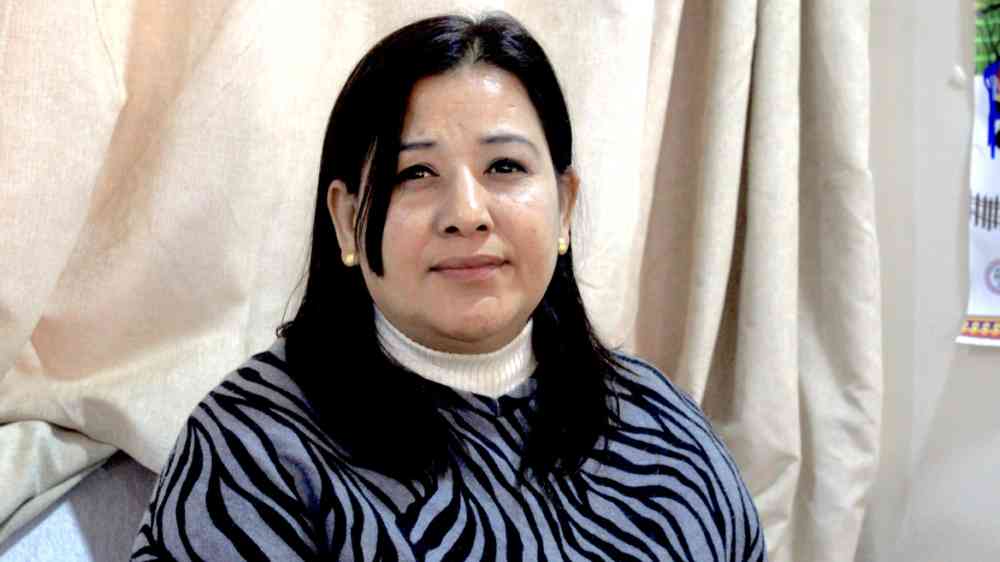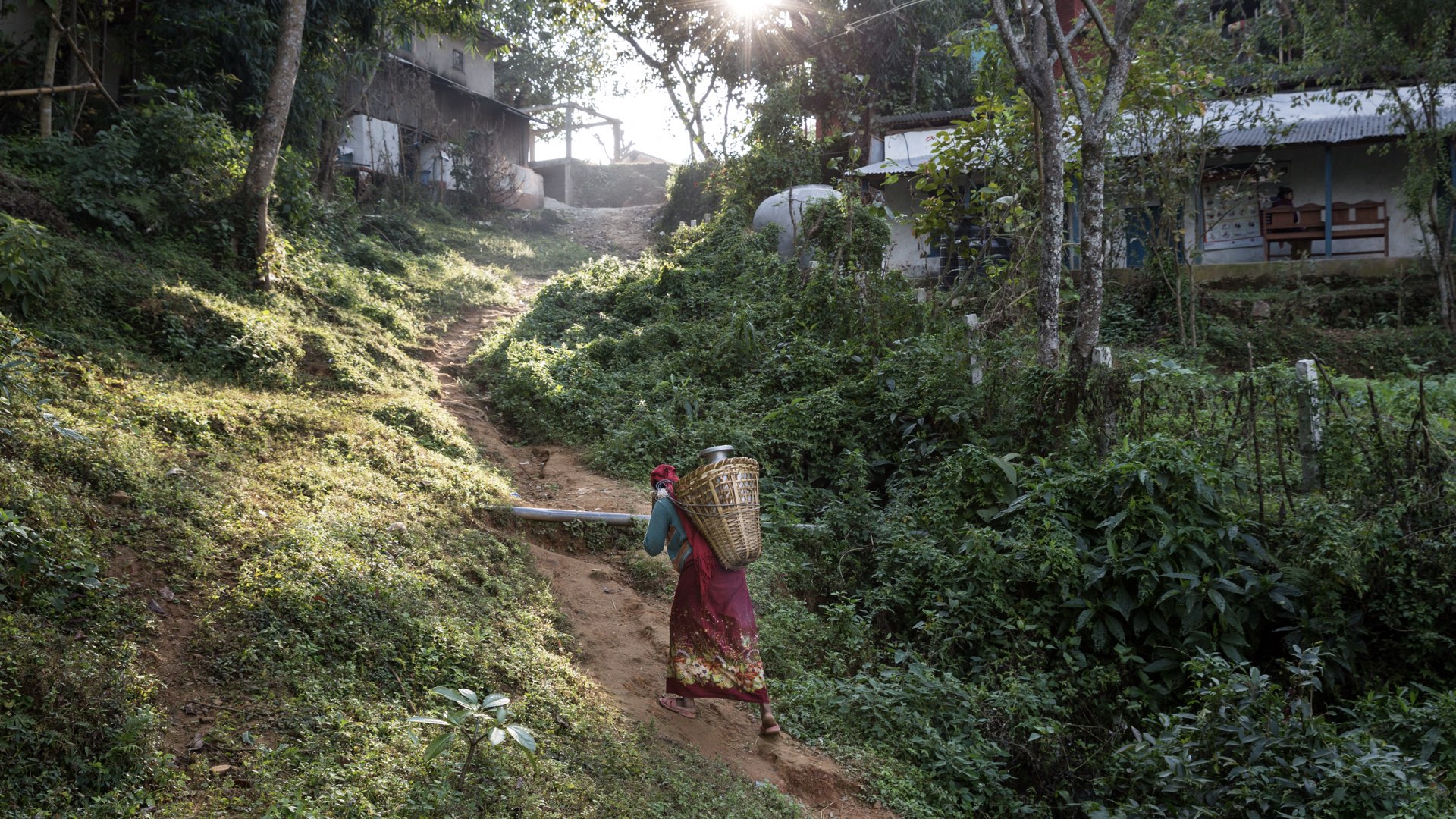Please help us improve PreventionWeb by taking this brief survey. Your input will allow us to better serve the needs of the DRR community.
Pratima Gurung: “All too-often, indigenous women with disabilities are invisible”

“Intersectionality is at the core of our work,” Pratima says. “Multiple identities get intersected in many layers. Too-often indigenous women with disabilities are invisible, voiceless and excluded within our own constituencies.”
To amplify the voiceless, she works on gender, disability, indigenous and youth issues. “We advocate with the government. All our work is done in collaboration and communication with women, disability and indigenous peoples organizations,” she says. “Our agenda is based on the needs and the challenges people with disabilities face. The question we always ask is: how do we work towards disability inclusion within the indigenous people's movement?”
Pratima says the pandemic has brought challenges for everyone but she says the impact for people with disabilities, indigenous people and ethnic minorities are different from others in culture and context. “We know that there are different challenges that people with disabilities have related to their impairments. We have 10 types of impairment with 4 categorizations depending on the severity of the disability,” she says. “We are a diverse and heterogeneous group. Within this diversity of impairment, we have gender, social, ethnic and cultural identities which are often left out.”
“We are a diverse and heterogeneous group. Within this diversity of impairment, we have gender, social, ethnic and cultural identities which are often left out.”
Pratima says our needs are diverse and distinct as indigenous women with disabilities but when it comes to addressing these complex needs, the nuance is often left out and they are “framed in a singular approach.”
She found people in remote communities were anxious and even frustrated. “Rates of mental and physical health problems increased when people were confined in their houses. There is increasing rates of sexual abuse, violence, discrimination and by family members and relatives."
Studies done by NIDWAN in 2021 found that 87.62% indigenous women and girls are subjected to higher rates of violence than non indigenous counterparts and especially during the pandemic.”
Issues come up every day posing questions about how to handle sensitive issues. Through consultations with rights based organizations and women at all levels of society, Pratima listens to the stories of women with disabilities from indigenous and marginalized women. “They share their experiences with anxiety and increasing rates of violence and discrimination that they face due to their multiple identities,” she says. “There has not been a serious attempt by government to combat this rise in discrimination and violence faced due to multiple and intersecting identities. We are not safe and our sisters are not safe within our homes.”
“There has not been a serious attempt by government to combat this rise in discrimination and violence faced due to multiple and intersecting identities. We are not safe and our sisters are not safe within our homes.”
Pratima says a paradigm shift is needed to integrate intersectionality as a central tool for changing policies that address historical, indirect and structural discrimination. “As women, as indigenous women and women with disabilities, we have common issues when it comes to sexual and reproductive health and rights during emergencies,” Pratima says. “We have to integrate disability, gender and culture along with an intercultural and collective rights approach with traditional healing practices in all disaster planning and response because reports indicate that 51.9% of respondents reported experiencing social violence based on their ethnicity, language, culture and disability.” (NIDWAN 2021)
“Many women and especially women with disabilities do not feel safe to tell their stories because they are being harassed or they are being abused and are not safe.”
The starting point is listening to the stories of persons with disabilities. “We need to ask how we become inclusive to all people. That inclusion should be framed from a gender, cultural, collective rights and from a disability perspective.”
“We need to ask how we become inclusive to all people. That inclusion should be framed from a gender, cultural, collective rights and from a disability perspective.”
Pratima says there needs to be a collective realization about the importance of better disaster planning and a more inclusive approach. “There are many marginalized groups who have not realized what change means in their lives and we are desperately looking for those changes. We need to have a shift in mindset to look at things in a comprehensive way which means no one is left behind in all processes. It is time to rethink, reflect and invest in how we support and reach to the most marginalized groups like indigenous women with disabilities.”

Join the Women’s International Network on Disaster Risk Reduction
The Women's International Network on Disaster Risk Reduction (WIN DRR) is a professional network to support women working in disaster risk reduction, in all their diversity. WIN DRR promotes and supports women's leadership in disaster risk reduction across the Asia Pacific region, and aims to reduce the barriers faced by women and empower them to attain leadership and enhance their decision-making in disaster risk reduction. WIN DRR is supported by UNDRR and the Government of Australia.
Learn More
The Impact of COVID-19 on Women and Girls with Disabilities
Committee on the Rights of Persons with Disabilities
United Nations Disability Inclusion Strategy
Pratima Gurung is the General Secretary for Indigenous Persons with Disabilities Global Network and Chair of the National Indigenous Disabled Women Association Nepal (NIDWAN) and a faculty member at Padma Kanya College in Kathmandu.
Editors' recommendations
Please note: Content is displayed as last posted by a PreventionWeb community member or editor. The views expressed therein are not necessarily those of UNDRR, PreventionWeb, or its sponsors. See our terms of use
Is this page useful?
Yes No Report an issue on this pageThank you. If you have 2 minutes, we would benefit from additional feedback (link opens in a new window).